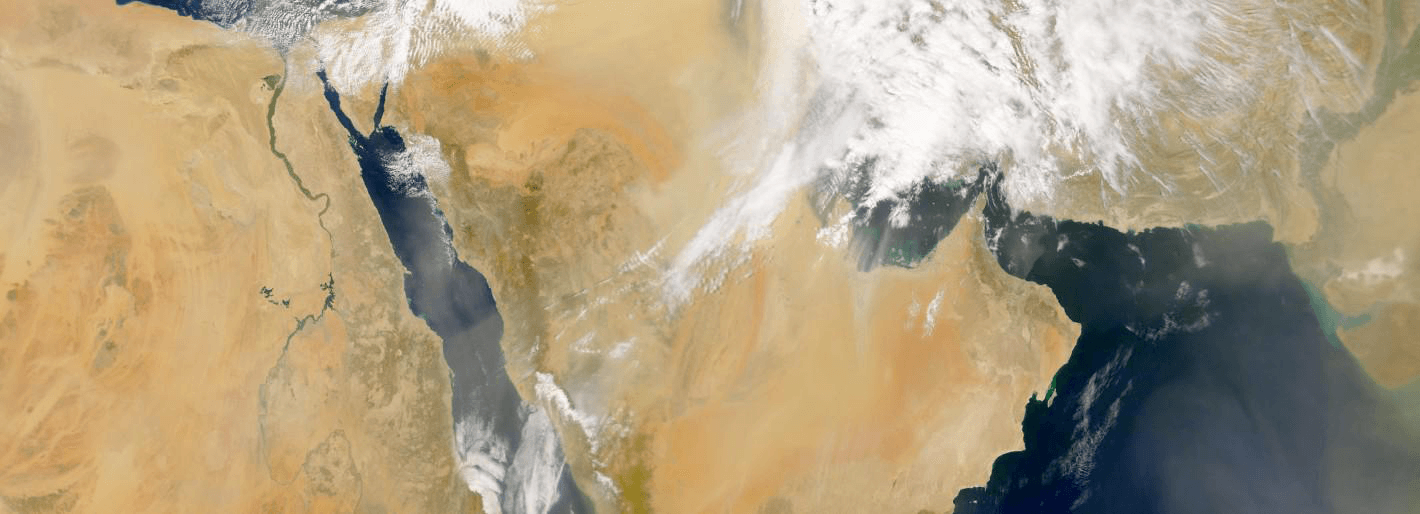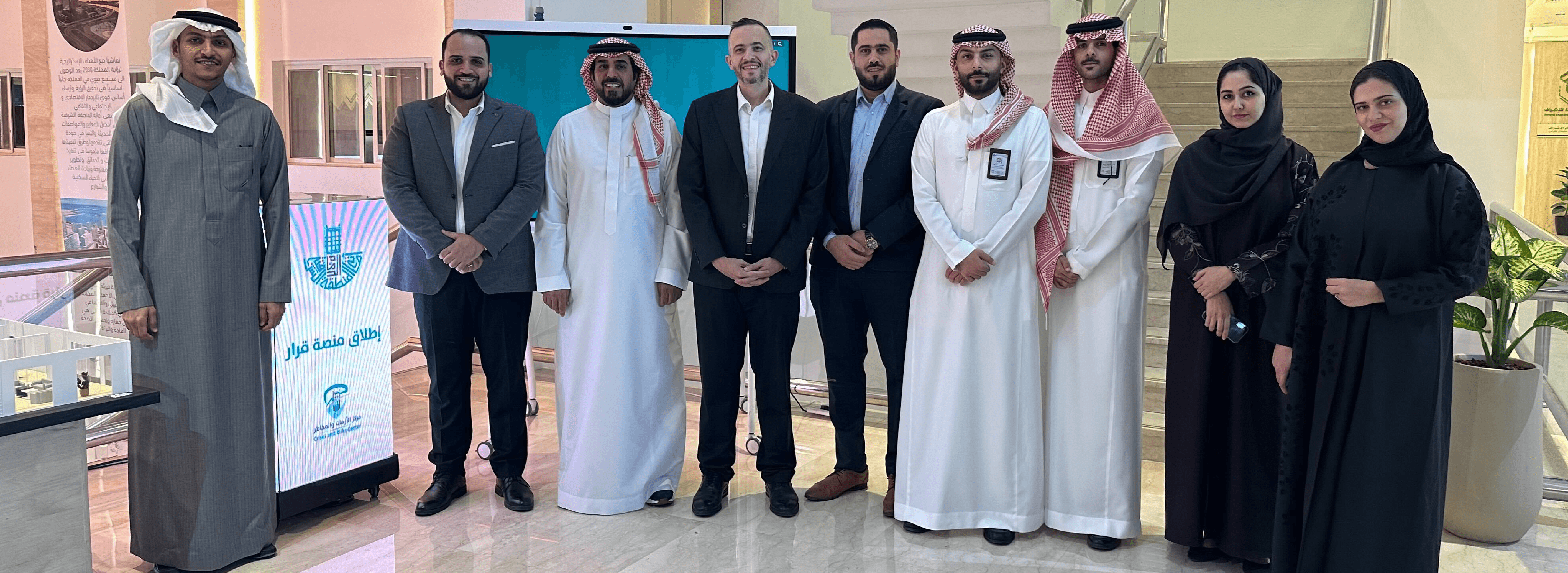Data-Driven Decisions in Supply Chains & Smart Cities
Travis Turgeon

From flooded factories to national export bans, today’s complex global landscape can interrupt standard business operations overnight. According to the latest BCI Supply Chain Resilience Report, nearly 80% of businesses faced supply chain disruptions in 2024, an alarming rise from 2023, with no indication of a slowdown ahead.
These disruptions result from a mix of geopolitical instability and natural hazards, affecting everything from production timelines to product costs and financial stability. In this global environment, unpredictability is the new normal.
To stay competitive, businesses must adopt unified, data-driven decision-making and resilient systems capable of adapting in real time. The good news is that SaaS tools exist that allow us to meet these challenges head-on, using proactive strategies rather than the reactive approach used in the past.
Below, we look at how forward-thinking companies use integrated data strategies to build resilience before problems occur.
Why Data-Driven Decision-Making is Here to Stay
High stakes define the contemporary business landscape, and making decisions based on instinct alone is no longer enough.
According to McKinsey, poor decision-making is costly to organizations, wasting time, money, and resources. One recent study estimated that Fortune 500 companies lose up to $250 million annually in wasted salaries due to inefficient time use. These estimates clearly show that conventional decision-making must give way to those using real-time, data-driven insights.
Data integration turns guesswork into real-time precision, breathing new life into sustainability, allowing leaders to unlock valuable capabilities like:
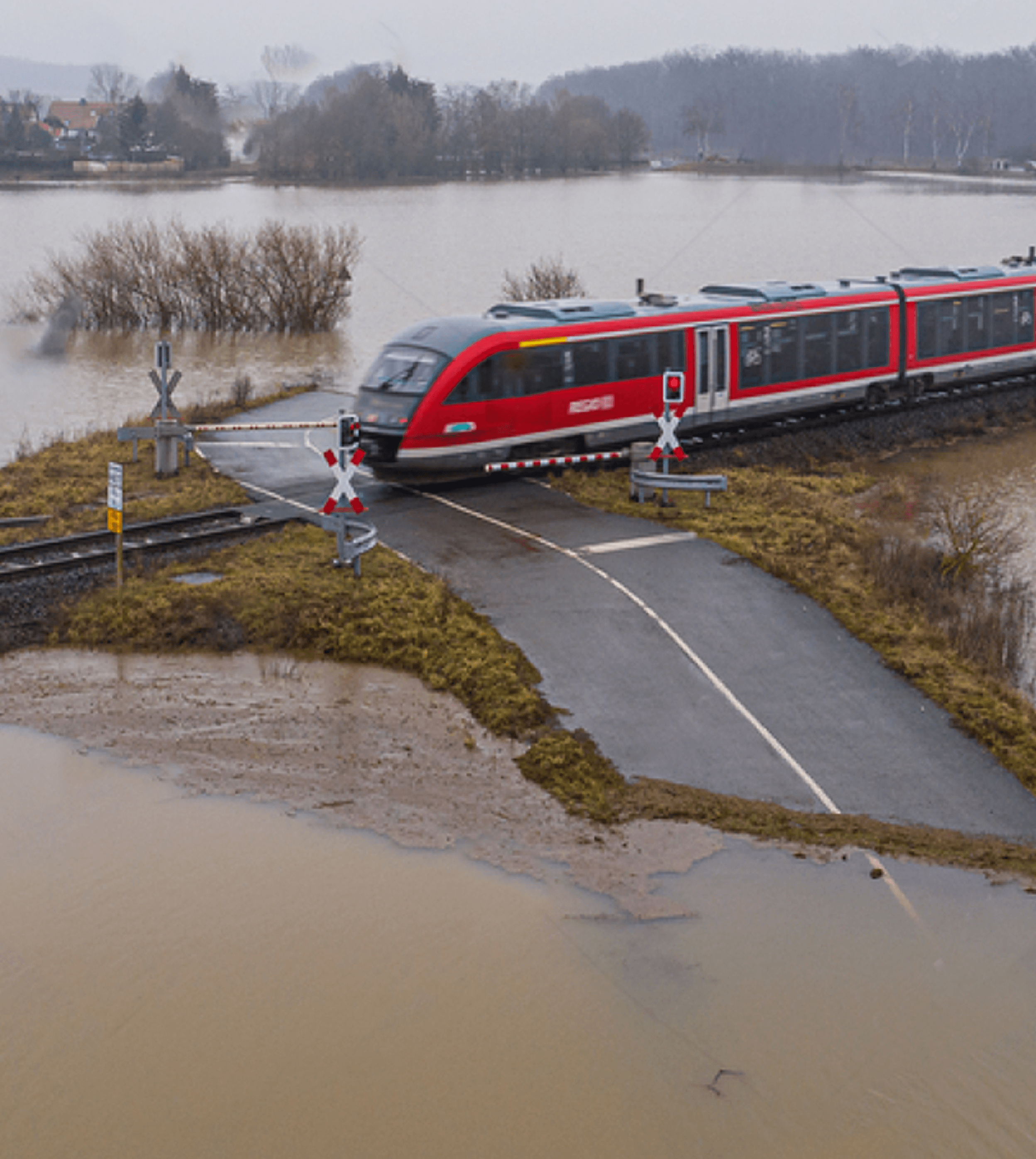

Risk anticipation through scenario-based simulations

Decision justification using AI-driven insights

Cross-department coordination, creating a cohesive, unsiloed ecosystem
ESG strategy, natural hazard risk management, and climate security demand precise, data-led execution. A study by IDC found that companies with solid foundations in data-driven initiatives are over four times more likely to make key decisions rooted in evidence, resulting in a more strategic approach from the top down.
Sector-Specific Challenges Are Growing in Today’s Complex Business Environment
Specific obstacles are becoming more challenging daily, depending on the industry, business, or target market.
Energy Sector: Balancing Renewables and Reliability
The rise of wind and solar energy, while essential for sustainability, introduces new challenges for grid reliability. Unpredictable weather patterns make renewable power output less consistent, increasing the risk of disruptions.
As grids incorporate more variable sources and reduce reliance on dispatchable generators, they become more vulnerable to outages and imbalances. The key to navigating this shift lies in real-time data, predictive analytics, and intelligent load balancing, enabling grids to forecast fluctuations and respond autonomously before minor variances trigger large-scale issues.
Agriculture: Responding to Environmental Volatility
As environmental volatility rises, pressure is mounting in the agricultural sector, contributing to unpredictable climate patterns, water scarcity, and shifting seasons. In 2023, unpredictable climate patterns in Jordan (particularly low precipitation and high temperatures) led to one of the worst droughts in years, impacting the agricultural sector and food security in the valley regions.
Effective crop management and drought response will rely heavily on real-time remote sensing data moving forward, not outdated historical trends or long-range projections.
Smart Cities: Building Real-Time Resilience
Smart cities leverage technology and data to achieve climate resilience and real-time coordination. The infrastructure allows departments to be connected through unified platforms, showing that data is instrumental in disaster recovery planning.
During the 2023 Turkey-Syria Earthquake, satellite data from NASA supported aid agencies in identifying critical areas to focus the response. This data was pivotal in the reaction, underscoring how integrated systems can enhance response times, potentially saving lives and critical infrastructure.
Unfortunately, most cities fail to assess their digital foundation until a crisis happens, eliminating the potential for integrated data systems to act as baseline support.
Transportation & Logistics: Navigating Constant Disruption
Supply chain disruptions, volatile weather patterns, and infrastructure failures are the most common risks in the transportation and logistics sectors. According to McKinsey, supply chain disruptions lasting longer than a month occur every 3.7 years, costing businesses up to 45% of a year’s profit over a decade.
In 2024, a cyberattack affecting global supply chains led Toyota to announce a production pause at 14 factories. The main problem was the lack of communication across systems and processes. Data integration and autonomous response systems could have prevented these issues, eliminating human error from an already hectic situation.
Disconnected systems lead to human-driven, reactive decision-making, ultimately increasing the risk of compliance violations, breakdowns in operation, and missed opportunities. Dynamic routing and efficient resource allocation, powered by integrated data, enable organizations to pivot quickly despite unexpected strikes.
The Five Pillars of Data-Driven Resilience
1. Integration Across Systems and Teams
When the tools used to compile data are disconnected, this creates blind spots and blurs the bigger picture. Despite a painfully clear awareness of this issue, many organizations still rely on slow, siloed systems that fail to integrate meaningful data into daily decision-making processes.
IDC market research estimates incorrect or siloed data can cost a company up to 30% of its annual revenue. Instead of trying to piece together workflows, organizations can adopt tools that consolidate over 1,000 data sources into a unified, actionable source. Custom dashboards map data directly to each team's workflows and KPIs, while cross-departmental visibility enables a synchronized response to disruptions.
The need for seamless integration is also evident across industries. In a recent survey of various decision-makers, 38% of participants said that integrating siloed applications and data is their biggest challenge of digital transformation within their organization.
Finding one application to do it all, built for speed and clarity, removes the traditional complications companies face, like duplicated data entry and delayed decision-making.
2. Multi-Hazard Risk Management
Multi-hazard events occur when simultaneous natural hazards threaten multiple systems, increasing risks for people, assets, and the planet. A five-phase framework - consisting of planning, preparedness, detection, response, and recovery - supports every phase of crisis management and response, allowing teams to strategize and build holistically, rather than piece by piece.
Building resilience into every aspect of a framework better equips teams to handle any expected or unforeseen event, and in some cases, prevent them from happening in the first place. These models enable real-time hazard detection, AI-suggested standard operating procedures (SOPs), vendor coordination, and incident recovery tracking.
Multi-hazard events account for approximately 19% of disasters globally but comprise around 59% of global economic losses, underscoring the need for effective risk management solutions and action plans that strengthen operational resilience.
3. AI-Driven, Actionable Insights
AI systems can interpret your data efficiently. These powerhouses can pull massive amounts of information from multiple sources, carefully and quickly surfacing the most relevant, actionable insights.
AI-driven platforms help streamline data into one source, eliminating various dashboards and pesky second-guessing. They can send early alerts and rank them by urgency, run digital twin simulations to test different scenarios before making decisions, and even automate case management to keep your teams on track for their goals.
Ultimately, AI bridges the gap between the dreaded information overload and confident action. Considering that 73% of companies waste time on manual tasks that they can automate, AI helps you avoid getting bogged down in the details and mapping out the most efficient use of your time.
4. Sustainability and Climate Security Integration
It’s becoming increasingly clear that sustainability is here to stay, and organizations must implement comprehensive systems to meet the demands of the ever-changing environmental landscape. For example, the Corporate Sustainability Reporting Directive (CSRD) sets a standard for nearly 50,000 EU companies and how they must report their climate and environmental impact. With global ESG investment rising alongside mandatory reporting requirements, the reality is that many businesses do not possess the necessary resources to keep up.
Rather than trying to learn reporting inside and out, businesses should partner with or hire a climate security professional to help them stay ahead of every inevitable curveball in this department. Partner them with the right tools, and you have a hybrid strategy that can help you track real-time emissions and other KPIs, automate climate risk modeling, and seamlessly integrate data into reporting frameworks, ultimately making compliance simpler, faster, and more resilient.
According to a 2023 CDP report, 52% of disclosing companies said climate-related risks threatened to impact their business financially and strategically. To stay competitive, businesses must now embed climate security and sustainability into every level of decision-making to position themselves as key players in the future.
5. Sector-Specific Intelligence
Managing a suite of sector-specific data management tools can get messy and costly. According to Gartner, poor data quality annually costs organizations an average of $12.9 million. Instead, look for solutions that centralize capabilities in a single location. Effective, holistic platforms should offer tailored insights into specific sectors, which might include:
- Aviation: Predictive safety modeling and flight risk alerts.
- Marine: Dynamic routing and offshore risk assessment.
- Smart Cities: Municipal continuity, flood response, and citizen safety.
- Energy: Climate-aware grid management.
- Agriculture: Precision irrigation, pest prediction, and crop modeling.
The above capabilities deliver measurable outcomes for each industry and end user.
Qarar in Action: Scalable Intelligence, Real-World Impact
In a world where disruption is constant—whether due to extreme weather, supply chain breakdowns, or cyber threats—Qarar empowers organizations to anticipate, manage, and recover from risk before it becomes a crisis.
Built by Ard Group, Qarar is a risk intelligence platform that transforms scattered data into clear, actionable insights. It supports organizations in making fast, coordinated decisions across sectors—energy, logistics, smart cities, agriculture, and beyond—by embedding real-time risk awareness into daily operations.
Where legacy systems react, Qarar predicts. It integrates risk forecasting, multi-hazard detection, AI-driven SOPs, and recovery planning into one unified platform—enabling organizations to move from fragmented responses to proactive, scenario-based strategies.
Qarar brings the five pillars of data-driven resilience to life:
- System-wide integration, breaking down silos.
- Multi-hazard readiness, from planning to recovery.
- AI-powered insights, to prioritize and act.
- Sustainability and ESG alignment, with compliance-ready data.
- Sector-specific intelligence, tailored to operational realities.
From minimizing supply chain disruption to managing national infrastructure risks, Qarar supports leaders with the clarity and confidence to act when it counts.
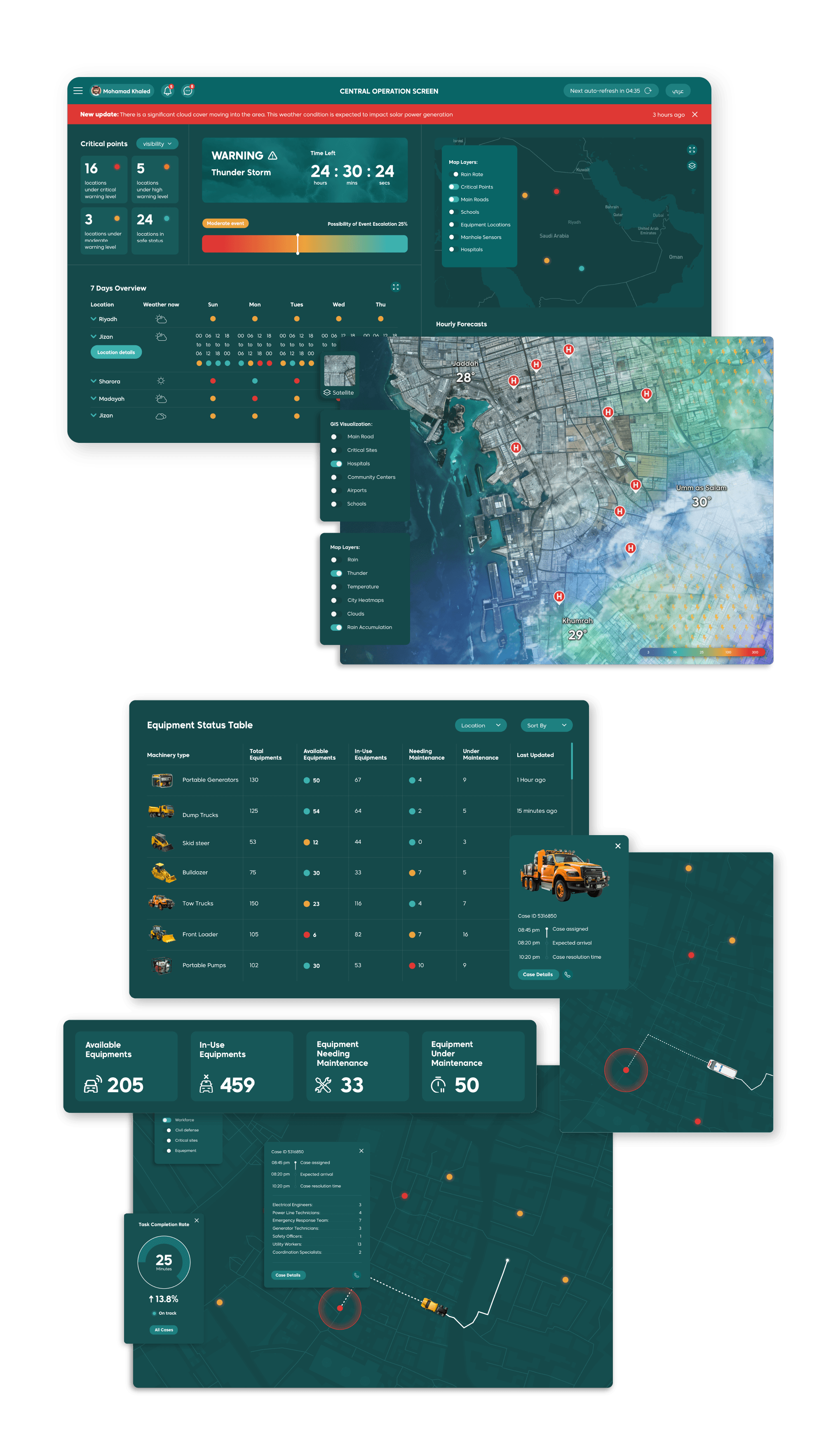
Real-World Results from Integrated Risk Intelligence (Case studies powered by Qarar)
Smart Cities: Coordinated Emergency Response in Saudi Arabia:
In the Eastern Province of Saudi Arabia, Qarar was deployed to support smart city operations across multiple municipalities. By unifying emergency alerts, infrastructure data, and real-time coordination tools, local authorities dramatically improved their ability to respond to incidents and mitigate cascading risks—strengthening public safety and service delivery in high-density urban zones.
Energy Sector: Managing Forecast Volatility at Saudi Electricity Company (SEC):
With growing reliance on renewables, energy forecasting has become a critical vulnerability. SEC turned to Qarar to enhance forecasting precision. Using Qarar’s integrated risk models and AI-powered simulations, SEC achieved a 15% improvement in energy forecast accuracy—enabling smarter grid management and reducing the risk of costly imbalances.
Transportation: Reducing Operational Disruptions at Saudi Railway (SAR):
Trip delays and equipment failures posed significant operational and safety risks for SAR. By using Qarar to centralize risk signals, track incidents, and coordinate maintenance, SAR was able to cut annual delays from 2,000 hours to just 200. The platform also supported faster incident response and long-term asset planning—ensuring reliability across thousands of kilometers of track.
Maritime Logistics: Navigating Offshore Risk in the Caspian Sea:
In the high-risk offshore environment of the Caspian Sea, JOCAP faced limited visibility and infrastructure constraints. By deploying Qarar’s marine risk modules, the team gained access to live weather tracking, asset monitoring, and emergency coordination tools. This led to smoother operations, enhanced safety protocols, and stronger protection for both personnel and offshore assets.
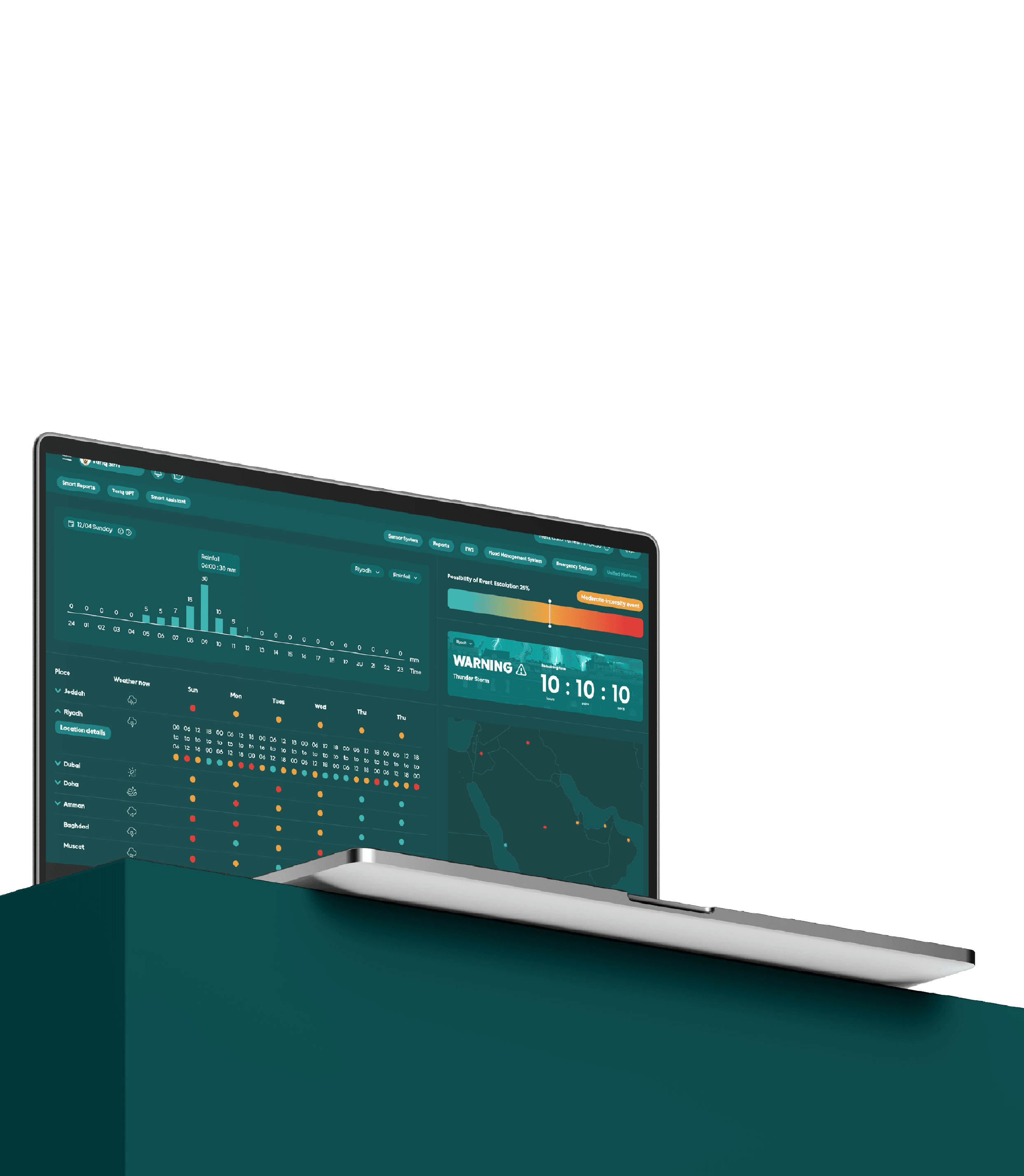
Complexity Is the New Normal, Clarity Is a Choice
Navigating today's interconnected and complex risk landscape requires more insight than ever. Data must be seen as a strategic asset and no longer an afterthought. Those who integrate data as a core part of their processes will lead the way into the fast-paced future of business.
As disruption accelerates, organizations that treat data as a strategic asset, rather than a fragmented afterthought, will define and excel in the next era of operational resilience. Whether through platforms like Qarar or internal systems of their own, those who lead with insight will be the ones prepared to adapt, act, and thrive.
Ready to lead with data? Explore how Qarar can support your organization’s resilience journey today.




